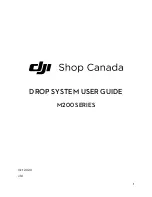
Page 17
Operation and maintenance instructions
Envistar / CRAMO
DSCR111125.01
Air handling with the focus on LCC
SV
EN
DA
FI
NO
Continuous product development may give rise to specification changes without prior notice.
Handling of refrigerant
The following information summarizes the requirements and guidelines regarding
the handling of refrigerant for cooling units. For further information please refer
to the F-Gas (EG/842/2006) and Refrigerant regulation KMF (SFS 2009:1605).
The aim of the regulation is to contribute to that the EU's objectives on climate
change mitigation under the Kyoto protocol is reached.
In general, the cooling unit operator shall:
• minimize and prevent leakage
• take action if leaks occur
• arrange for that the servicing and repair of the refrigerant circuits is per
-
formed by certified personnel
• arrange for that the handling of refrigerant is performed in an environmen
-
tally safe manner and in accordance with existing national regulations.
For cooling units charged with less than 3 kg refrigerant, there is no requirement
for leak checking or inspection report.
Maintenance Instructions and Procedures
General
This section of the instruction is general. It is intended to enable simple peri-
odic inspection of the unit and show, in the event of a breakdown, what simple
checks can be made before calling for skilled service help. The accompanying
wiring diagrams and special instructions for the components included in the sys-
tem will provide the necessary information for more complicated modifications in
the system.
Periodic Inspection
1. Appoint one or a few persons skilled in this field to assume responsibility for
continuous inspection of the cooling system. Make sure that these persons
are familiar with how the system operates and where the components of the
system are located.
2. The cooling system is designed to operate automatically. Make sure that the
settings are not altered by anyone who lacks sufficient knowledge of how
the system operates.
3. Make sure that the machine room or some other location where system
components are installed is kept clean.
4. Check that liquid can flow freely in the drainage pipework.
5. If you are unsure of anything in or near your cooling system? Get in touch
with your supplier! It may often be better and less inexpensive to call too
often than too seldom.
















































